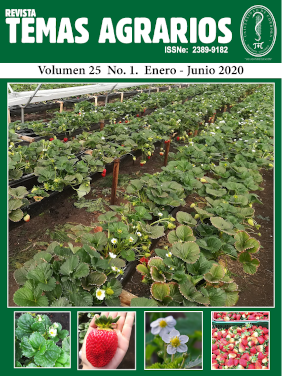Mercury pollution in hornbeam ( Carpinus betulus ) trees in green space at industrial park area (Iran
Contaminación por mercurio en árboles de carpes (Carpinus betulus) en espacios verdes en el área del parque industrial (Irán)

This work is licensed under a Creative Commons Attribution-NonCommercial 4.0 International License.
Show authors biography
The heavy metal mercury among other toxic metals can accumulate in plant organs in large quantities toxic to humans. Carpinus betulus is a most species from Caspian hyrcanian Mixed Forests, in this research it was studied that how much mercury absorbed from the environment . Twenty five trees were randomly selected, and the distances between trees (Hornbeam) were 10 to 15 meters in industrial park in North of Iran . From each tree selected, 15 grams leaves and 15 grams root were harvested with horticultural scissors and 15 g of soil from 30 cm depth. Four stations were selected near steel factory. A control station, located 2 km from the steel factory was selected and three stations were located near the steel factory. Samples of leaves, soil and roots are prepared after encoding, placed in paper envelopes and transferred to the lab. The amount of mercury in plant samples was prepared by dry digestion with atomic absorption spectroscopy. To compare the effect of mercury concentration on leaf and stem and root, Tukey's test was used. The average concentration of mercury in soil is 0.96 mg / kg, root 0.551 mg / kg, leaf 0.28 mg / kg. With increasing mercury, observed in the amount of leaf chlorophyll content is decreased. According to conducted investigations in study the Carpinus betulus tree can be concluded that the accumulation amount of heavy metal, mercury, and hornbeam is suitable for absorbing the contamination of mercury of soil pollution.
Article visits 699 | PDF visits
Downloads
- Terry N., Banuelos G.S.1999. Phytoremediation of contaminated soil and water, CRC Press,p33-44.
- Raskin I., Ensley B.D.2000. Phytoremediation of toxic metals., John Wiley and Sons, P.77-79.
- Yoon J., Cao X., Zhou Q., Ma L.Q. 2006.Accumulation of Pb, Cu, and Zn in native plants growing on a contaminated Florida site, Sci. Total Environ. 368 : 456–464.
- Bada B.S., Raji K.A.2010. Phytoremediation potential of kenaf (Hibiscus cannabinus L.) grown in different soil textures and cadmium concentrations, African J. Environ. Sci. Technol. 4:35-45
- Baker A.J.M., Proctor J.1990. The influence of cadmium, copper, lead, and zinc on the distribution and evolution of metallophytes in the British Isles, Plant Syst. Evol. 173 : 91–108.
- Lombi E., Zhao F.J., Dunham S.J., McGrath S.P.2001. Phytoremediation of heavy metal–contaminated soils, J. Environ. Qual. 30 : 1919–1926.
- Thangavel P., Subbhuraam,C. V .2004.Phytoextraction: role of hyperaccumulators in metal contaminated soils, PROCEEDINGS-INDIAN Natl. Sci. Acad. PART B. 70: 109–130.
- Sinicropi M.S., Caruso A., Capasso A., Palladino C., Panno A., Saturnino C.2010.Heavy metals: toxicity and carcinogenicity, Pharmacologyonline. 2 : 329–333.
- Glick B.R., 2003.Phytoremediation: synergistic use of plants and bacteria to clean up the environment, Biotechnol. Adv. 21 : 383–393.
- Nkansah M.A., Korankye M., Darko,G. Dodd M.2016. Heavy metal content and potential health risk of geophagic white clay from the Kumasi Metropolis in Ghana, Toxicol. Reports. 3 : 644–651.
- Arnon D.I.1949. Copper enzymes in isolated chloroplasts. Polyphenoloxidase in Beta vulgaris, Plant Physiol. 24 1-16.
- Atobatele O.E., Olutona G.O.2015. Distribution of three non-essential trace metals (Cadmium, Mercury and Lead) in the organs of fish from Aiba Reservoir, Iwo, Nigeria, Toxicol. Reports. 2 : 896–903.
- Pant D., Sharma V., Singh P.2015. Pb detoxification in Equisetum diffusum, Toxicol. Reports. 2 : 716–720.




















